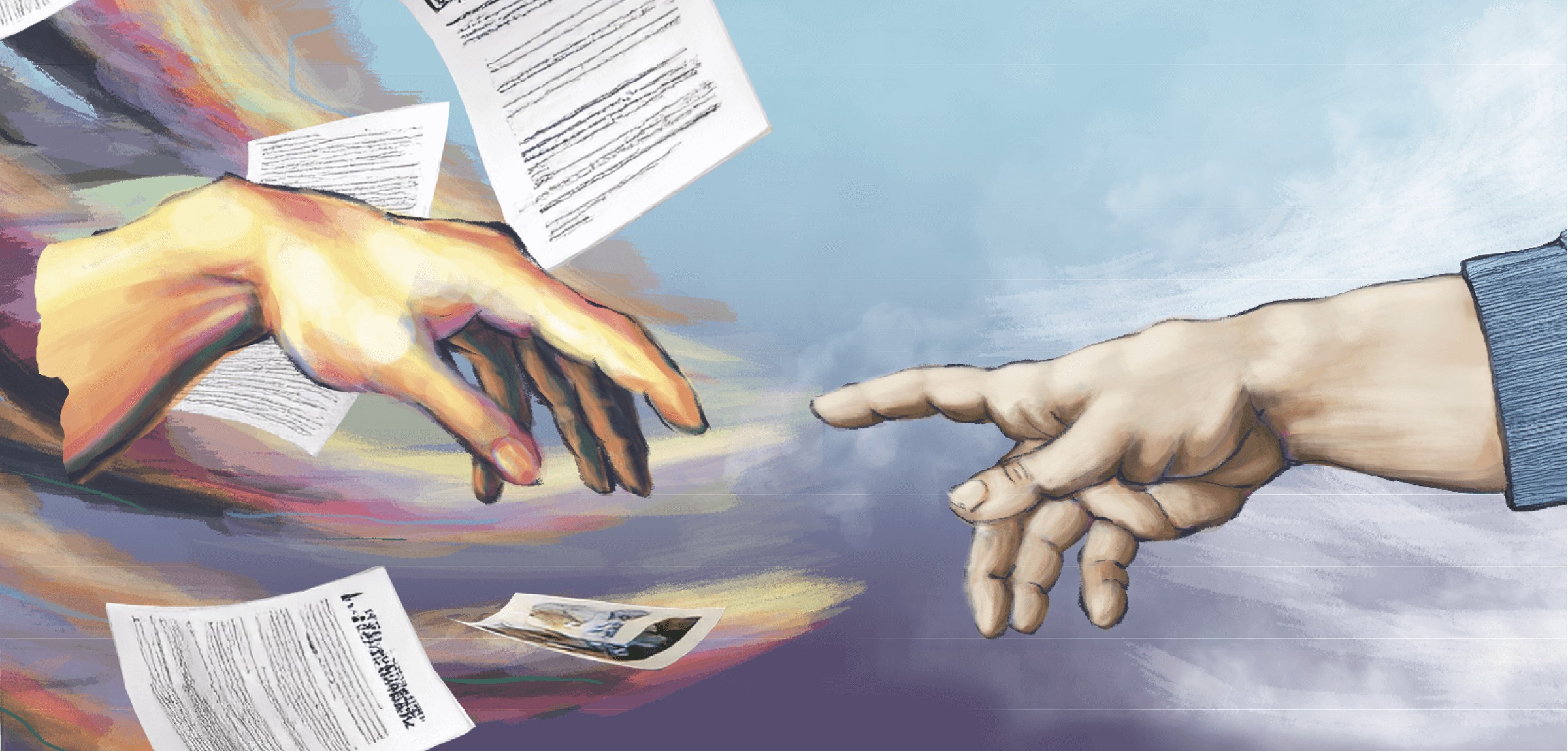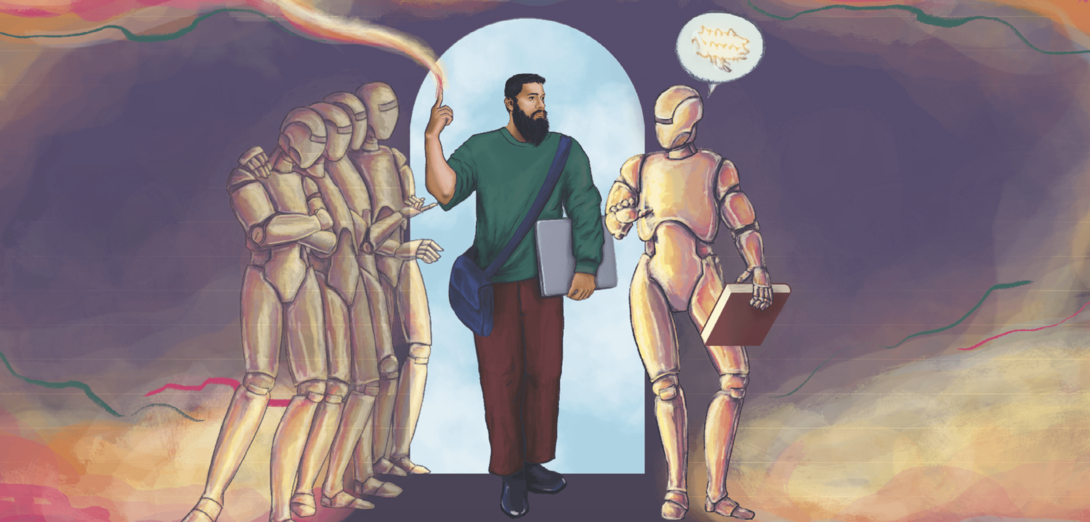We are currently experiencing a surge in the availability and capabilities of artificial intelligence (AI) — an intelligence explosion — that is leading to a transformation of a variety of fields, including K–12 education.
AI is becoming a defining force in education, reshaping Alberta classrooms and influencing teaching practices in ways that were unimaginable a few years ago. As Alberta teachers, we are at the front lines of this shift and must approach it with an innate curiosity tempered by a healthy dose of caution — cautiously optimistic as a mindful approach.
As we move beyond the current landscape of AI tools into an era where AI systems become an increasingly prominent feature of education, we must remain vigilant in our ethical considerations, ensuring that AI serves to empower rather than undermine the highly relational (and human) elements of teaching and learning.
AI offers exciting possibilities for all our classrooms, but it also presents some unsettling challenges that require a thoughtful and critical examination by the profession, especially regarding its impact on decision making involving children and youth, its impact on trust, teacher professional judgement, cognitive atrophy, student and teacher privacy, and the increasing inequality across our provincial public education system.
What is artificial intelligence (AI)? AI ... ANI ... AGI
At its core, artificial intelligence (AI) is an emerging system of technologies built around artificial “neural networks” that are focused on mimicking human cognitive abilities, such as reasoning, learning and problem solving. While machine neural nets operate differently than human neural networks, they are both profound in their abilities.
Today, most AI tools used in educational settings fall under the umbrella of artificial narrow intelligence (ANI) — systems designed to excel in specific tasks like text generation, data analysis and digital content creation, including generative AI models like Copilot or ChatGPT that specialize in creating original content based on input data.
Generative AI, in particular, is transforming Alberta classrooms by streamlining lesson planning, generating creative and new learning materials, supporting differentiated instruction and assessment, translating and simplifying texts or video, and assisting with specialized educational needs like individual support plans, and language accessibility for students. A growing concern at the moment is the use of AI for real-time assessments and automated grading, which, while potentially offering insights into student progress, also raises significant questions about student privacy, the security of uploaded data, algorithmic or data bias, and the potential for overreach of AI-driven decisionmaking in K–12 educational contexts. (See section on moral passivity.)
In the next few years, we may witness a shift from isolated tools to integrated intelligent systems that could evolve into artificial general intelligence (AGI), which is a theoretical form of AI capable of understanding and performing tasks at a human-like level across diverse domains. If and when AGI arises, we will begin to see a decline in human exceptionalism and a considerable rise in automation. However, AGI remains, for now, a speculative concept.
Moral passivity
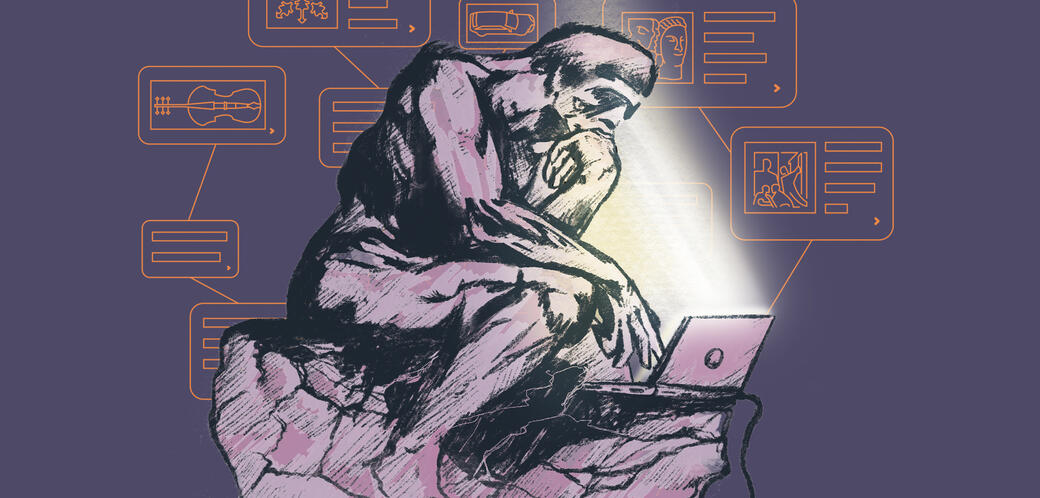
The potential impact of AI on teacher autonomy and moral agency
While AI is celebrated for its efficiency, it also introduces significant ethical concerns, such as algorithmic bias and the potential erosion of professional decision making. We must critically engage with these systems to ensure they uphold fairness, transparency and ethical standards.
For the past eight years, the ATA has been conducting an AI scoping research project, and one of the most pressing concerns raised is the risk of moral passivity. As AI becomes more integrated into decisionmaking processes involving K–12 schools, there is a danger that education decision makers may come to rely too heavily on machine-generated recommendations, surrendering their professional judgment in favour of algorithms.
For example, a school system runs all of its data through an AI system to analyze probabilities of success for their various students. When the analysis is done, it identifies individual students who it deems have a low probability of success, and then makes decisions and sets directions based on this analysis, potentially removing hope and helpful resources that could intervene in that child’s life.
Moral passivity, and the handing off of decision making to machine learning, could ultimately lead to a deskilling of the teaching profession, where teachers are no longer exercising the full range of moral and ethical reasoning that is essential for making decisions in the best interests of their students. Maintaining teacher autonomy is one of the best ways to ensure AI tools and systems remain subordinate to the professional judgment of teachers who are closest to their students. I often find it helpful to frame it like this: the AI system does not know if the child has eaten breakfast or whether they just had a conflict with another student moments ago in the hallway, or what is going on within their complex and unique human selves.
The ethical dilemmas of generative AI
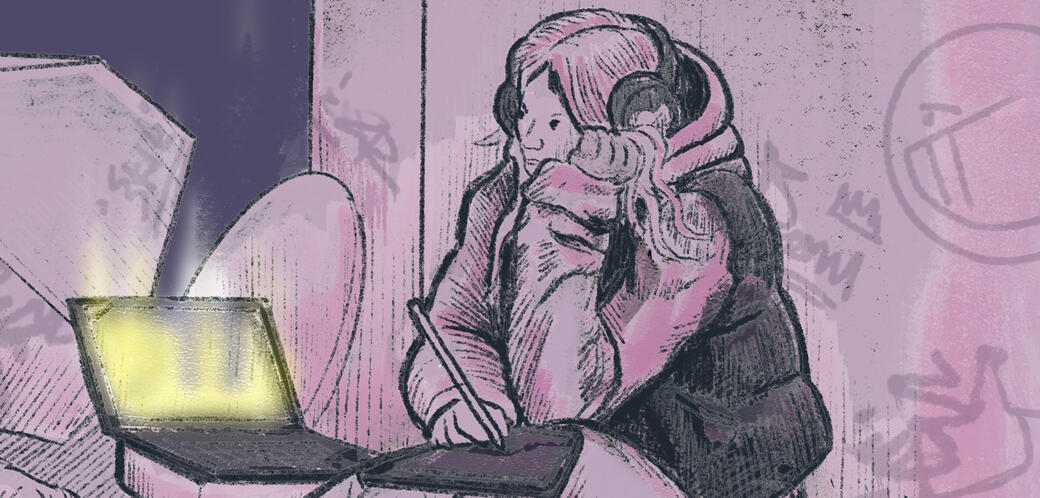
Generative AI, particularly large language models like Copilot or ChatGPT, have introduced new opportunities for content creation in our classrooms. However, it also challenges fundamental educational values like creativity, originality, copyright and academic integrity. While AI-generated essays and artworks can serve as useful learning tools, they also raise questions about the purpose of education: Is it about producing the “right” answer or fostering the creative process itself?
Further, as AI systems become more capable, they threaten to displace human critical (and potentially creative) thinking. This shift could lead to a reliance on prepackaged, AI-generated solutions rather than encouraging students to grapple with complex problems themselves, raising concerns about cognitive atrophy.
Additionally, the increasing access to a variety of AI tools and systems, some with many more capabilities than others, may widen existing inequities in education. Students and teachers with greater access to advanced AI technologies could gain a significant advantage over those in underresourced schools, leading to a deeper digital divide. This disparity could further exacerbate the growing inequity across Alberta schools, giving some students enhanced support and opportunity for exploration while others fall further and further behind.
The cognitive costs
Cognative atrophy
Cognitive atrophy is the weakening of students' cognitive abilities due to overreliance on AI systems that can diminish students’ capacity for deep learning. With AI increasingly handling tasks like writing, problem solving and even generating creative content, there is a risk that students will not fully develop their own critical thinking, memory, unique forms of creativity and problem-solving skills. Memory in particular is an interesting consideration, as we offload our recall capacity to intelligent systems in order to manage more and more of our lives. This raises the question: If a student can use AI to complete an assignment in seconds, what happens to the learning journey and all that is gained through that process?
The concern about cognitive atrophy is not limited to students — it also affects teachers. With AI performing tasks that once required significant cognitive engagement, such as lesson planning, grading, and instructional design, teachers risk losing the intellectual rigor that is essential to their own professional growth and development.
The future of AI in education: teacher as collaborator of agent?
As AI technologies continue to evolve, we are seeing a shift from AI as a tool to AI as a collaborator or even as “agent.” For instance, AI is increasingly being used to develop individually responsive learning plans, diagnose exceptionalities and even interact directly with students as virtual tutors. While these applications hold promise for enhancing learning, they also raise critical ethical questions: To what extent should we allow AI to take on substantive roles in the classroom? Will it reduce teachers to mere facilitators, or can it empower them to engage in more meaningful, creative and powerful pedagogies?
The rapid integration of AI in education brings both opportunities and risks. Alberta's teachers will play a critical role in shaping how these technologies are used in classrooms. By critically engaging with AI tools and systems, teachers can help create a future where technology enhances rather than diminishes the human experience in education. This requires ongoing professional development and thoughtful policy design.
It is essential that AI tools are designed and implemented in ways that respect teacher autonomy, prevent cognitive atrophy, and promote equity and inclusivity. We must ensure that AI systems are designed to complement teachers, not replace them, allowing teachers to maintain agency and uphold their professional responsibilities to help the next generation flourish.
Our feature artworkThe feature's illustrations are composed of original artwork combined with strategically integrated AI-generated visuals. Creating successful final imagery required adjustments to AI-generated results. Our experience demonstrated the importance of human craftsmanship and decision-making. |
Books
The following books on artificial intelligence are available through the ATA library
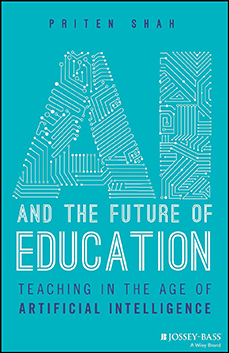
AI and the Future of Education: Teaching in the Age of Artificial Intelligence
While acknowledging the difficulties that AI has brought into the classroom, Priten Shah focuses on the benefits that using AI can give teachers and students. He challenges us to see how AI can move students to new achievements that seemed impossible previously.
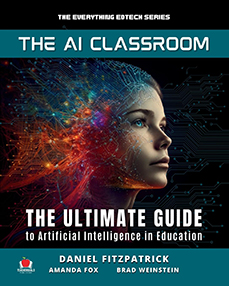
The AI Classroom: The Ultimate Guide to Artificial Intelligence in Education
The authors weren’t kidding when they titled the book “the ultimate guide.” This was the most popular AI for teachers book of 2023.
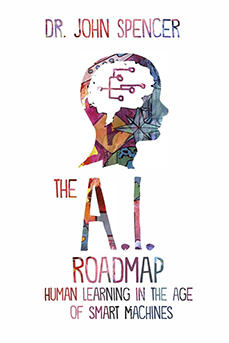
The A.I. Roadmap: Human Learning in the Age of Smart Machines
Author John Spencer discusses the course through AI for teachers. He states that teachers should focus on the 21st century skills of creative thinking, project-based learning and information literacy for students, as these are the human skills needed in a world of smart machines.
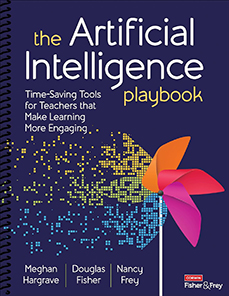
The Artificial Intelligence Playbook: Time-Saving Tools for Teachers that Make Learning More Engaging
This excellent AI guide for teachers demonstrates ways that educators can use AI to engage students, differentiate lessons and assess learning in a fraction of the time usually needed for these tasks.
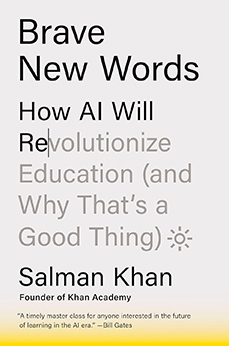
Brave New Words: How AI Will Revolutionize Education (and Why That’s a Good Thing)
Author Salman Khan, the founder of the Khan Academy, examines the possible impacts of AI in the classroom and suggests ways that teachers and students can adapt to those changes.
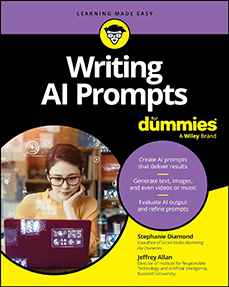
Writing AI Prompts for Dummies
The way we ask AI to perform tasks has a major impact on the quality of the results we get. The authors guide readers through designing good prompts as well as giving advice on issues related to AI such as copyright.
How to borrow
ATA library materials are shipped free of charge to members throughout the province. Loan periods are one month and include complimentary return postage.
Email the library
In his research role at the ATA, Phil McRae has for many years stayed up to date on the latest developments in artificial intelligence. He was recently appointed a special advisor on AI and education to the general secretary of Education International.
